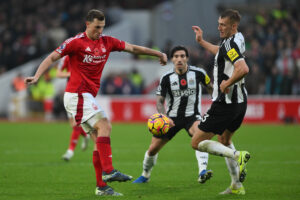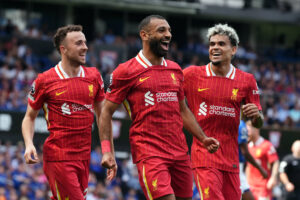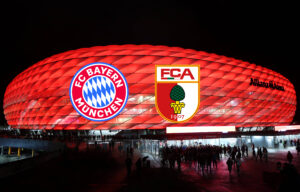In the 1980’s, the ban on English teams from European competition hit the domestic game tremendously. As a result, many British players, like Gary Lineker, left for sunnier climes, and football at the highest level. One such player was Ian Rush, whose time with Italian giants Juventus was considered a failure. But an in-depth look at his time in Serie A tells a slightly different story.
Early Career
Rush began his career at Third Division side Chester City, and it wasn’t long before several top flight clubs began circling. Liverpool, Everton and Manchester City were all interested in the 18-year-old striker.
His only season at Chester saw him score 14 league goals, and in April 1980 Liverpool acted swiftly. The £300,000 fee was a record for a teenager at the time. Because the deal was done after the transfer deadline, he remained at Chester for the rest of the season. In May that year he made his international debut for Wales, in a 1-0 defeat to Scotland.
His first season at Anfield saw him only used sporadically, and it wasn’t until December that he made his debut. He made nine appearances in all competitions, without scoring, but his time as a back-up player didn’t last long. From the start of the 1981-82 season, he became the first-choice striker, edging out club legend David Johnson.
The next five seasons saw Rush score 167 goals in all competitions, with 26 goals in 1984-85 his lowest tally. His predatory instincts, ability to score inside or outside the box with either foot, and his knack of being in the right place at the right time made him the deadliest striker in Britain. In this time he also won four league titles, four League Cups, the F.A. Cup and the European Cup. Manchester United manager Ron Atkinson cited Rush as the biggest reason for his side’s failure to win the league.
Juventus
In July 1986, Juventus made a £3.2 million bid to take Rush to Turin. With English clubs banned from European competition, following the Heysel disaster, several British players departed the English game around this time.
The wages offered by continental clubs were significantly higher than the salaries in England. They could also dangle the carrot of being able to play in the continental competitions. For players like Rush, whose nation hadn’t qualified for an International tournament in almost thirty years, this was the highest level he could hope to play at.
Despite Liverpool receiving a British record fee, Juventus couldn’t fit Rush into their squad straight away. With Michel Platini and Michael Laudrup in the squad, they already exceeded UEFA’s limit on foreign players. Rush remained at Anfield on loan for the 1986-87 season, and hit a further 40 goals in total. He then packed his bags, and headed to Turin.
Much was expected of the striker when he donned the famous black and white striped shirt. In the pre-season friendlies, he scored plenty of goals and it looked like they wouldn’t miss the recently-departed Platini. Unfortunately for Rush, his career got off to the worst possible start. On his debut, a cup tie against Lecce, he suffered a thigh injury. This would keep him out of contention for over a month. When he finally made his first Serie A appearance, in a 1-0 defeat against Empoli, he clearly wasn’t match fit.
The following weekend he scored his first league goals for his new club, hitting a double against Pescara. It was expected that a glut of goals would follow, but it didn’t quite work out that way. He scored just once more before the winter break, in a 3-0 win over Avellino.
The Welsh striker took some time to adapt to his new surroundings. The fact that he was still learning the language didn’t help, with Laudrup one of the few English speakers at Juventus. This didn’t help him integrate himself in the dressing room. He also admitted being surprised at the intensity of the training, compared with back home.
The biggest problem of all, however, was on the pitch. Juventus were a shadow of the side that had won the European Cup in 1985. Platini and Zbigniew Boniek, the architects of that success, had departed and a new team was taking shape. The sixth place finish that season shows how far they had fallen in just a couple of years.
There was also a change in the role he was expected to play. At Liverpool he had just been expected to put the ball in the net, in a team that played at a furious pace. As soon as the team would go a goal up, they would try and score again. He was still expected to score goals at Juventus, but with a greater onus on team work. If the team were winning 1-0, they would consolidate and try to defend their lead. While Rush bought into this philosophy, it clearly didn’t help his goal output.
In January 1988 Rush scored a penalty in a 4-0 win over Empoli, his first Serie A goal in almost three months. Following this, Juventus went five league games without scoring, which put paid to their slim title hopes. It wasn’t until April that he found the net again, scoring in successive games against Ascoli and Napoli.
While their league form was in the doldrums, they had a good run in the Coppa Italia. They were eventually knocked out in the semi-final, by city rivals Torino. Rush had saved his best form for this competition, scoring five goals in seven games before their exit. He also scored one in the UEFA Cup, which his side exited early at the hands of Panathinaikos.
Perhaps Rush’s biggest contribution to his sides season came in the league game in their local derby. Juventus and Torino were in similar positions in Serie A, and met each other two weeks before the season ended. With the game tied at 1-1 in the 88th minute, the ball fell to the Welshman inside the box. A typical poacher’s finish won the game for Juventus. The two sides finished joint sixth place, with Juventus edging it on goal difference – two ahead of Torino. It mattered little, as both qualified for the UEFA Cup. Had Rush not struck, his side would have had the rare humiliation of finishing below Torino. His final goal for the club ensured that they didn’t.
For a British player in his first, and only, season in Italy a goal tally of 13 is not too bad. Unfortunately the Juventus board decided that Rino Marchesi was not the man to take them forward. He had presided over their worst season in over thirty years. They replaced him with Dino Zoff, and the writing was on the wall for Rush.
Return to Liverpool
Rush returned to Anfield in 1988, despite interest from Manchester United and Inter Milan. He linked up with John Aldridge and Peter Beardsley in a three pronged attack. In 1990 he won his fifth and final league title.
Following Kenny Dalglish’s shock resignation in 1991, Liverpool never fully recovered. Graeme Souness took up the reigns at his former club and the whole landscape changed. There was also a noticeable difference about Rush himself. He was still a prolific striker, but his all-round play had improved. He credits his time in Italy for this as, despite his unhappiness, he learned a lot at Juventus.
When the equally prolific Robbie Fowler graduated to the first team, they struck up a brilliant partnership. In two seasons they plundered almost 90 goals between them in all competitions. Despite this they still could not mount a serious challenge for the Premier League title.
It seemed that Liverpool would be back to winning ways when they paid £8.5 million for Stan Collymore. They instantly became most pundit’s favourites for the title, but again this did not materialise. What did happen, however, was that Rush found his opportunities becoming more and more limited. After just 20 league games in 1995-96, he departed Anfield on a free transfer. With 346 goals in all competitions, Ian Rush remains their all-time top scorer.
Later Career
Following his second, and final, departure from Anfield, he joined Leeds United. He spent one season at Elland Road, scoring three times before he was on the move again. The Welshman joined his former team-mate and manager Kenny Dalglish at Newcastle United. He was loaned midway through the season to Sheffield United, and later played for Wrexham, and Australian side Sydney Olympic. In 2000, Rush announced his retirement at the age of 38.
Following his retirement, Rush did some coaching at Liverpool under Gerard Houllier. In 2004 he became manager of his first club, Chester City. After guiding them to League Two safety, he resigned following a dispute with chairman Stephen Vaughan. He has since worked as a pundit for Sky Sports, ESPN and, more recently the Indian Super League.
Conclusion
It would be unfair to label Ian Rush a failure in Italy, as there are many other elements in the equation. At the time he played there, Italy was the hardest league in world football, especially for a striker. In the one season he played there, the top scorer was Napoli’s Diego Maradona, one of the greatest players of all time. Given that he was adapting to a new team, new country, new culture and a totally different way of playing, his record is quite respectable. Another point is that he played in possibly the most average side in Juventus’ recent history.
Rush denies his supposed comments that it felt like he was “living in a foreign country”. He looks back on his time there with great affection, and credits it with making him a better player. He may not have been the most successful British import ever, but he certainly wasn’t the worst.
main photo






